Text and photos by Seth J. Frantzman
In August 2014 the extremist group calling itself Islamic State (ISIS) swept through a part of northern Iraq inhabited by the Yazidi religious minority. ISIS had already broadcast to the world their intention to exterminate “un-believers” and those they opposed. They had massacred 1,600 Shia army cadets at Camp Speicher on June 12, 2014 and ordered all Christians to convert or leave their homes through the areas they controlled. In August the crimes became even more brutal as they massacred men and elderly Yazidi women and sold an estimated 5,000 women into slavery. Many Yazidis describe the mass killings as a genocide. Seventeen mass graves were found around the town of Shingal (Sinjar in Arabic), after it was liberated by Kurdish peshmerga forces. In mid-December of 2015, a year and a half after the massacres, I went to northern Iraq see for myself.
Refugees as far as the eye can see
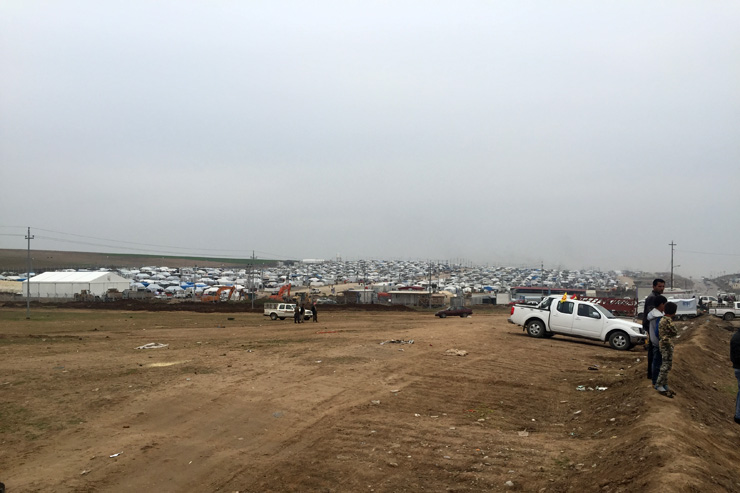
Since August 2014 around 250,000 Yazidis have been forced to flee their homes and become refugees. According to Vian Dakhil, a Yazidi member of Iraq’s parliament, more than 85 percent of the Yazidi people are not living in these kinds of camps. Some of them are seeking better lives in Europe, which means a perilous voyage through Syria or Turkey to Greece. At this camp of 20,000, young girls and boys sold phone cards and men sold live chickens ($3 a kilo). A boy butchered the chickens on a cardboard box next to his father’s truck. Yazidi girls who were enslaved by ISIS and raped but managed to escape or are freed return to their families in these camps where there are scant services to help them through their trauma. A documentation center in nearby Duhok records their stories.
The doctor on the mountain
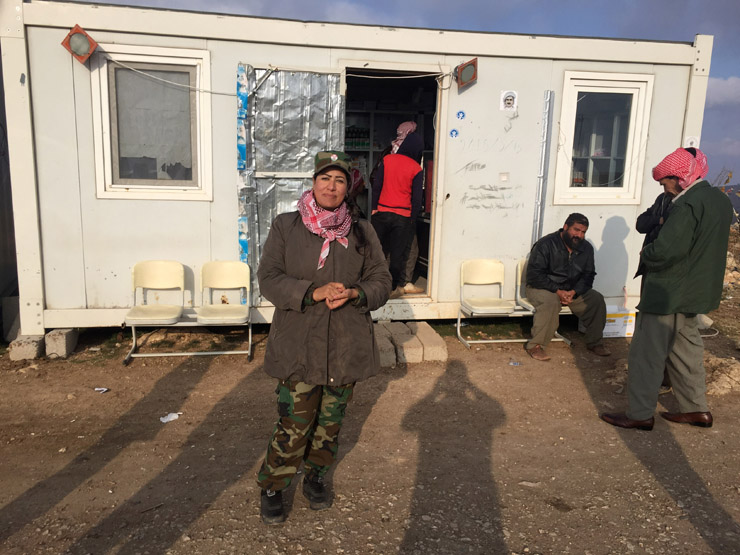
Khansa Shamdin, a Kurdish woman, was a deputy head of surgery in a Syrian hospital before she fled the regime of Bashar al-Assad. On the 15th of September she volunteered to be helicoptered in to Mount Shingal, which was surrounded by ISIS, to help Yazidi refugees. Around 20,000 Yazidis had refused to flee the mountain, preferring to live and die closer to the homes they had fled. Shamdin says she sees around 120-150 patients a day and provides free medicine, funded by the Barzani Foundation. She now has a small caravan which is parked near the summit of the mountain, in the cold, biting wind. “I had no idea there were so many people here,” she says. Living in tents in the valleys below the medical caravan, the people make their way on foot in height of winter to ask for help. She has also aided Yazidi women who were rescued from ISIS and who suffered rape and require urgent medical attention.
The clothes they left behind
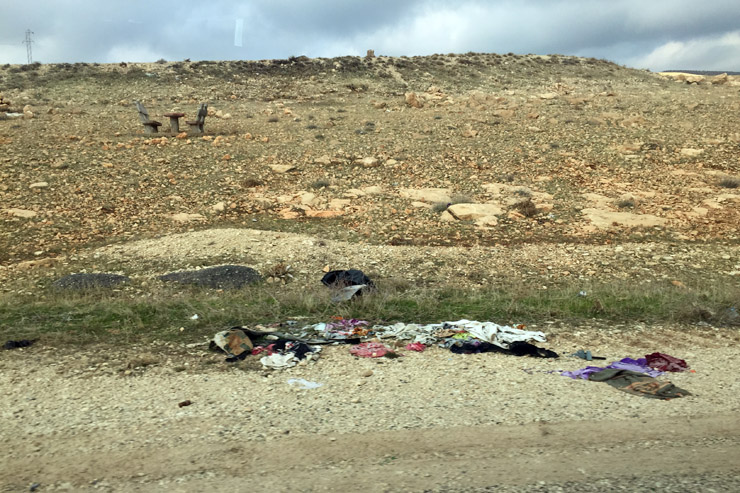
ISIS conquered the area south and north of Shingal mountain so quickly, the people who fled took only what they could carry. They had heard that in the town of Tel Afar that ISIS supporters had begun to murder Yazidis. This road became a lifeline as tens of thousands fled to the mountain. Their cars and trucks broke down and the burnt hulks still line this highway of life and death. The people discarded clothes by the roadside. A year and a half later no one has returned to remove the clothes. It feels like taboo. This is a living, ongoing, tragedy. They dead have not been accounted for. The clothes cannot be touched. Like a living museum.
Niswan Zalud, 22
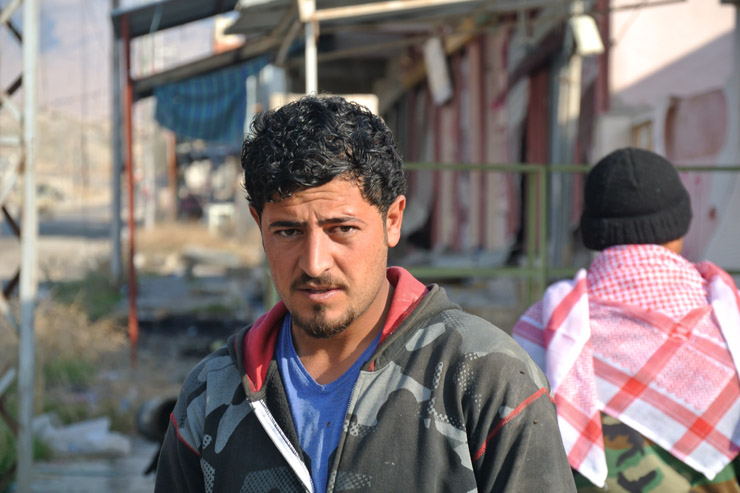
“766 people from my district were captured and killed by ISIS. We would like to go back, but there is no interest unless the women are returned. I don’t think they will be though, some of them were taken to Saudi.” Zalud runs a small shop in the ruined city of Shingal. Where once there were 80,000 people, now there are just a handful like him. “I walked nine hours to Shingal [mountain] with my father, brother and sister,” he recalls. “But my uncle’s daughter was kidnapped and is in Raqqa,” he says, referring to the ISIS capital in Syria. “We never thought this will happen, that ISIS will do this crime. We didn’t have weapons to defend ourselves.” Now he sleeps in the shop. Tuborg beer for $1.50. This town was once a majority Arab, although the outlying district was primarily Yazidi. Those like Zalud say the crimes mean coexistence will not return. Too many of these people saw their neighbors raise the ISIS flag even before the killings began.
A human skull
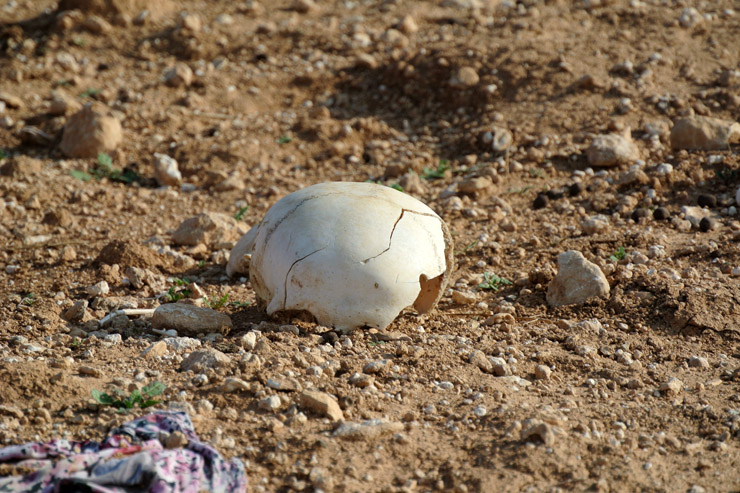
There is no exact figure for the number killed. Khairi Bozani, the Kurdish Regional Government (KRG) head of religious affairs for Yazidis says that 1,882 were murdered. 3,321 women and children have been rescued from the hands of ISIS. 3,400 women and children are still held as slaves by the extremists. 19 mass graves have been located so far and it is expected 20 more will be found as more villages are liberated by the Kurdish peshmerga (the military forces of the KRG). Mass graves? How many times can one say mass grave before it is trivial, banal? When I was in Shingal, there was a mechanical feel to it. “We will go see the mass graves now.” Like a tour. A genocide tour. But the reality is too human, too real. It’s a human skull. It doesn’t seem real. A year and a half ago this person walked and breathed and laughed. Now this is all there is? No grave? No name? Just dirt, and bones strewn about. A mass grave.
‘They shot them in the head and bulldozed the bodies’
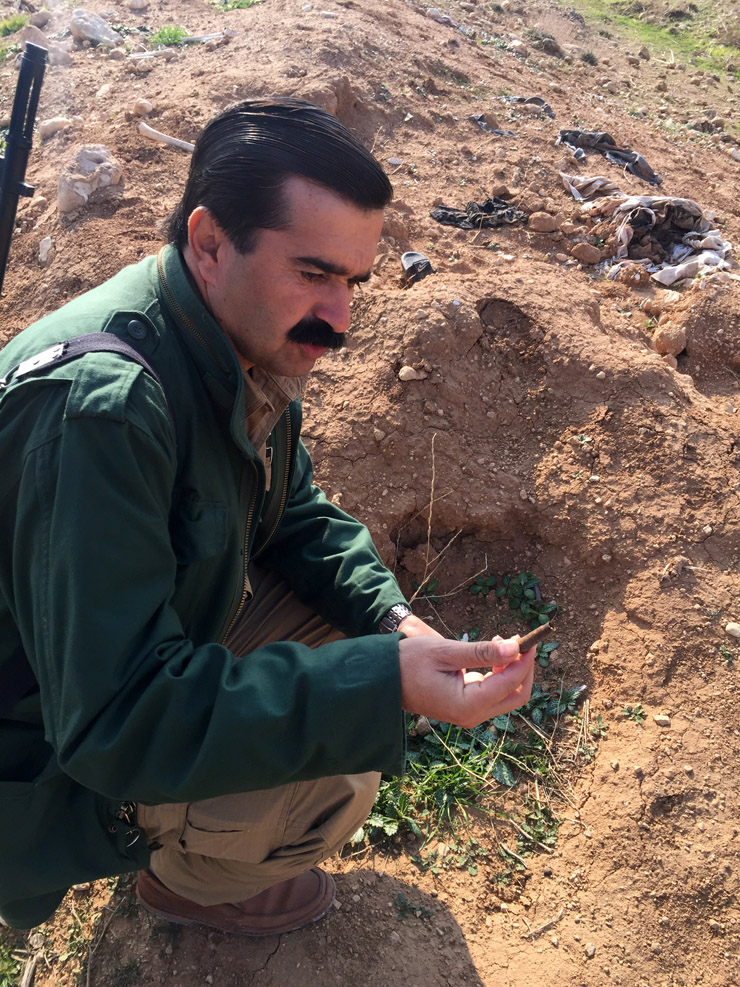
Sheikh Nasser Pasha holds up a cartridge from an M-16 and an AK-47, the two weapons used to massacre more than 1,000 Yazidi men and elderly women. At this site the bodies of elderly women were found. ISIS had captured thousands of armored vehicles from the Iraqi army, many of them U.S. made Humvees, and it used them to overrun this area. The Kurdish peshmerga who were here fled when they saw they could not defend against armored vehicles. Yazidi, unprotected, abandoned their villages for the mountain. Some of those left behind were told to stay by neighboring Arabs. Videos shot by ISIS showed men and women separated, and the men and elderly women taken away. ISIS machine-gunned the victims. Two men, hiding beneath the corpses, were able to escape and bring news to the world.
A teenager’s soccer shirt and jaw bone
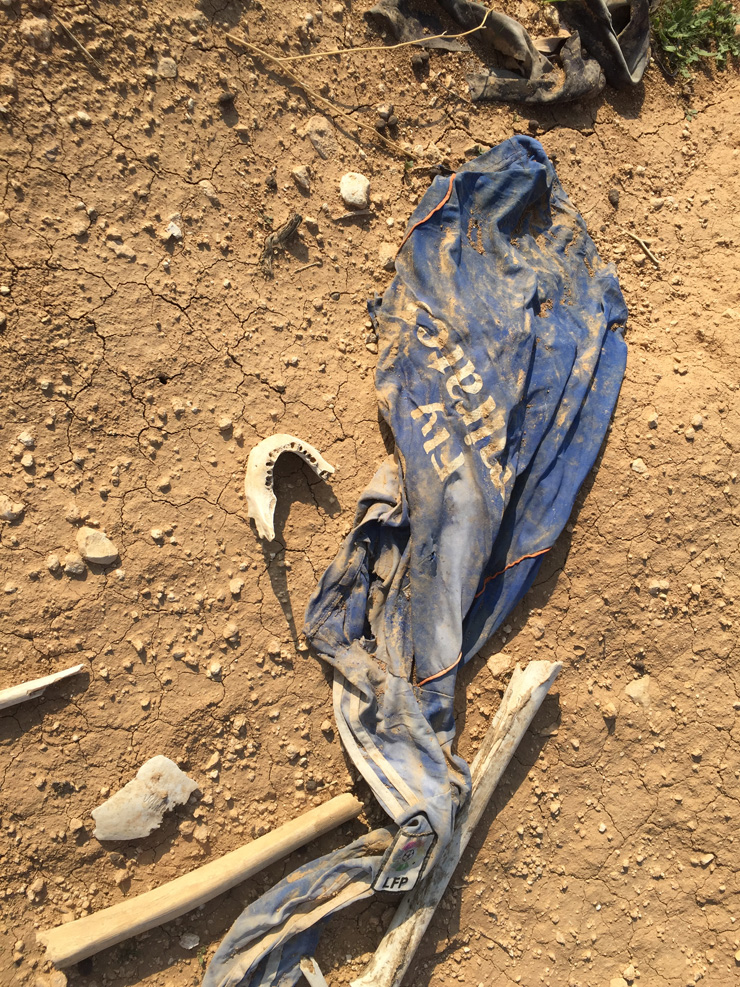
ISIS sold women and young children into slavery but killed all the teenage and adult males. In this mass grave there were women and this teenager. ISIS tried to put dirt over the mass grave, but the rains came and washed it away. Dogs got at the bodies and spread the bones on the surface. A year and a half later they sit in the sun. No protection, no one to investigate, no one to care, except a few lonely journalists who come to see. How did an extermination campaign against an ethnic group happen before the world’s eyes, and no one is here to care about this? This isn’t some secret, some place no one can get to. A six hour drive north of Erbil, a few hours flight from Europe.
Blindfolds
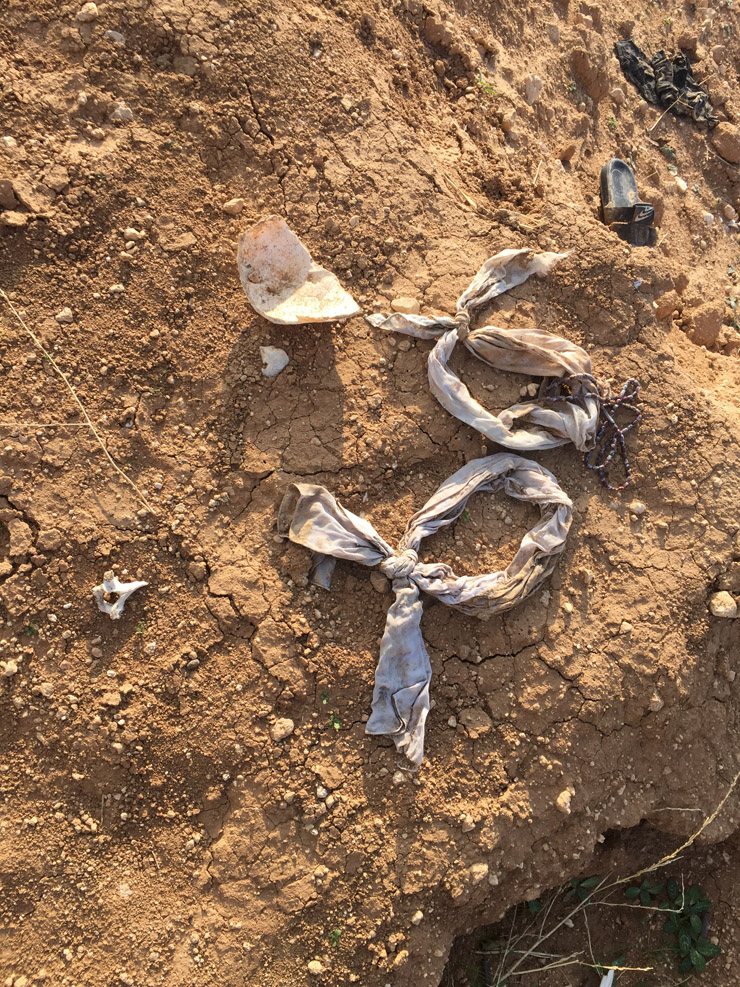
The mass graves near Shingal town are a living museum of genocide. The blindfolds ISIS put on the Yazidis before they shot them in the back of the head, are here, on the surface. When I was confronted with this horror, it seemed surreal. Can I reach out and touch the clothing of death? No. It’s untouchable. It’s present, but it transcends. It is an everlasting trauma.
Field of blood
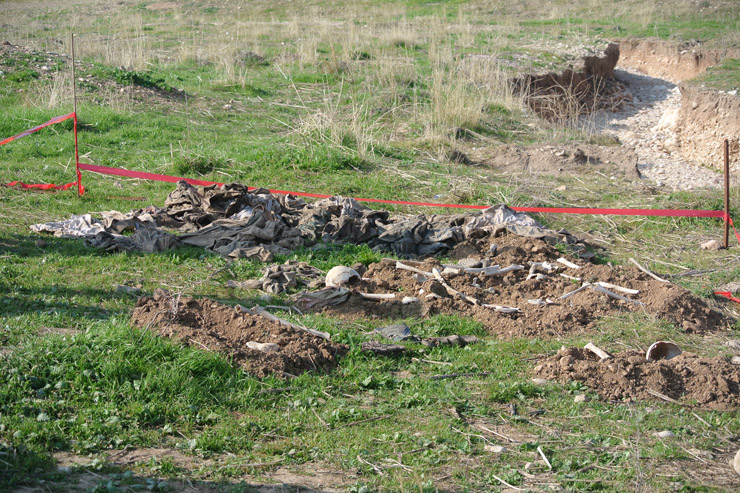
The similarities with the Holocaust and other genocides scream out. Here men in groups of 35 were taken from their families and killed. When the dismembered bones were found, only their small plastic Iraqi IDs helped identify some of them. When writers in the West speak of “negotiating” with ISIS or excuse its crimes, scenes like this must be shown them. A little red ribbon is all that demarcates the crime scene from us. You want us to negotiate with those who did this? Would we have negotiated at Buchenwald? Why does an organization that destroyed the lives of hundreds of thousands, that sold women, that engaged in systematic rape, murder and cultural genocide through the dynamiting of religious sites, deserve anything but the kind of reaction the KKK gets in the West?
The resistance
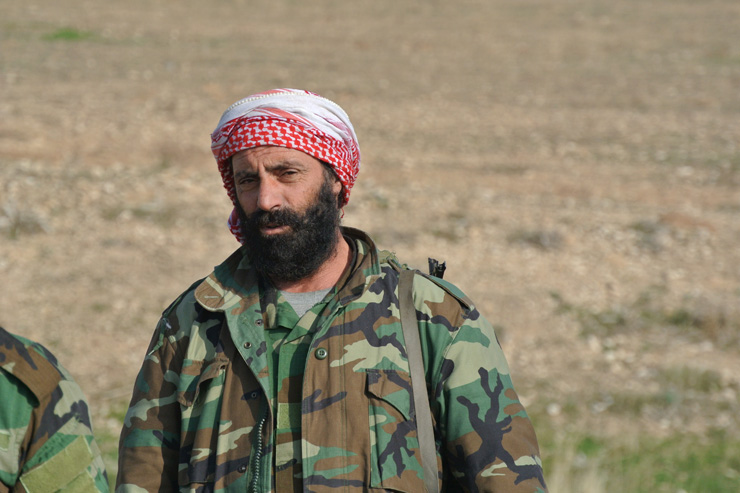
A bearded Yazidi man shoulders an AK-47 near the frontline with ISIS east of Shingal. More than 8,000 Yazidi men and women have joined the Kurdish peshmerga since the war began in August of 2014. Several hundred others have joined Kurdish PKK guerilla units that operate in the same area against the extremists. The war has transformed this community from one of passive, peaceful life, to active participation in armed conflict. Before August 3rd there was trust and a belief that no matter how bad things became, no one would commit mass killings and rape and slavery. Now men speak of a “break” with the past. Take up the rifle, sleep with it by your side, that is all that is left.
The author is a Jerusalem-based journalist and academic who holds a PhD from The Hebrew University of Jerusalem.
